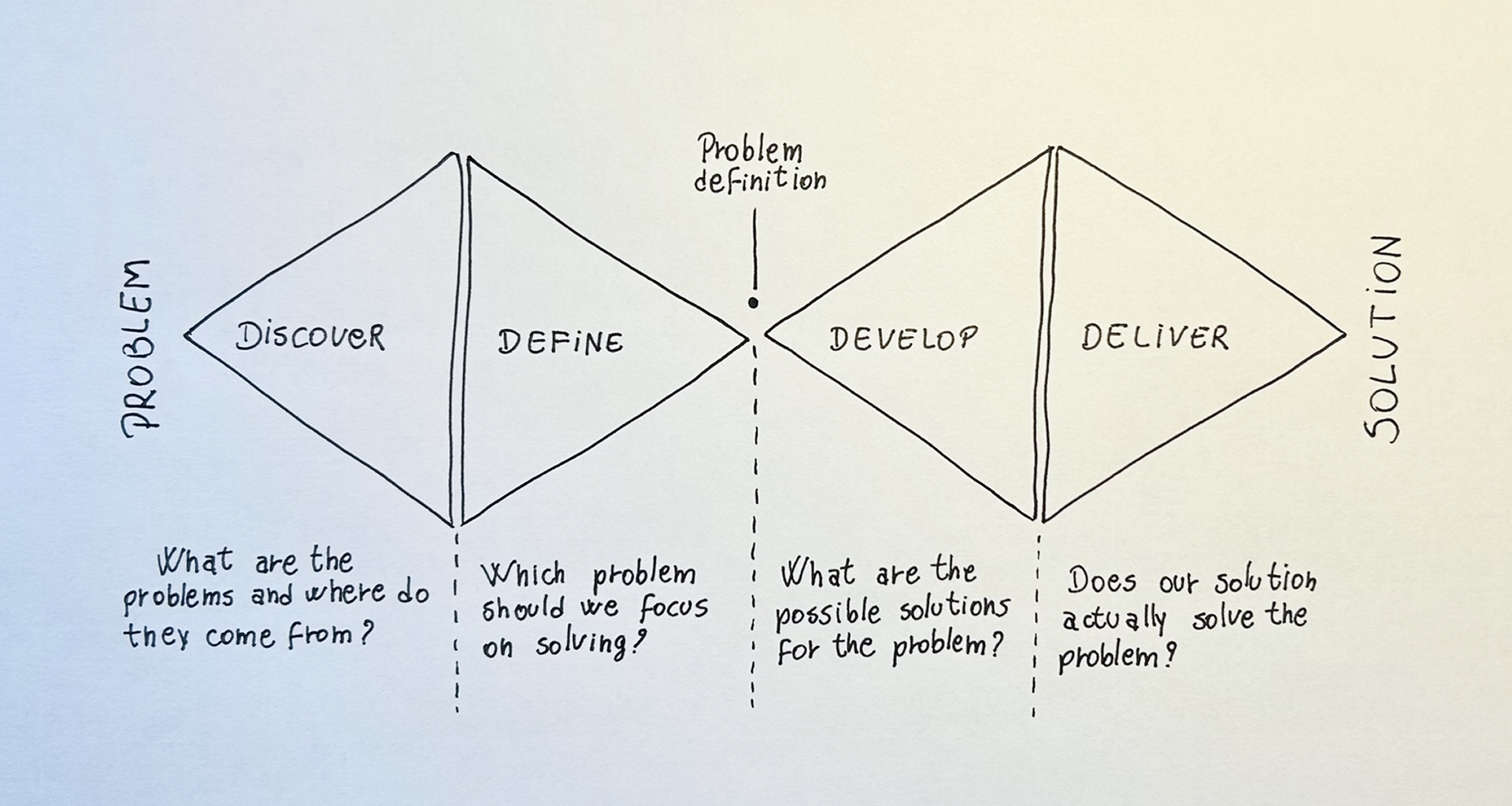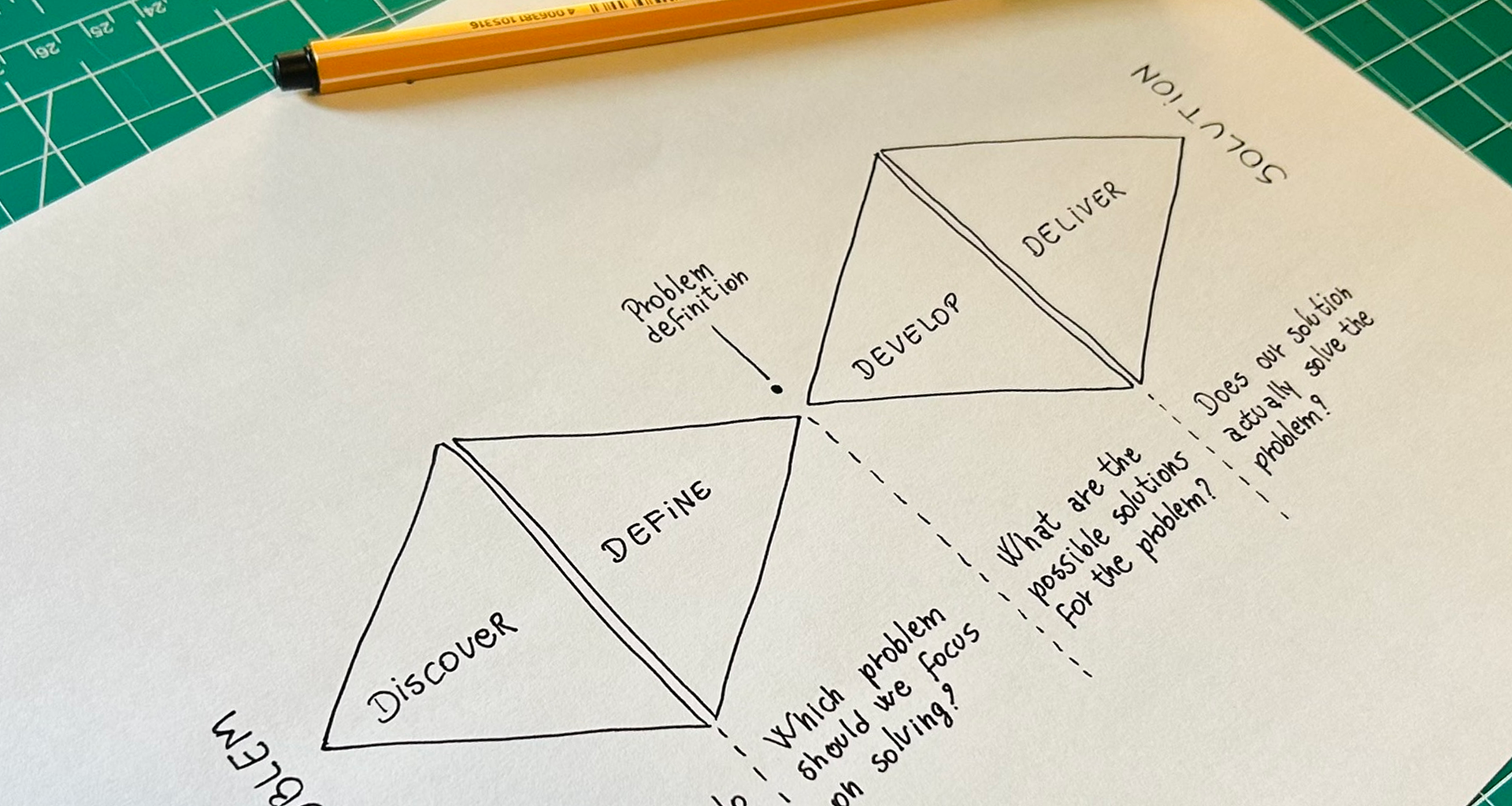When creating is more about listening than imagining
If there’s one thing design has taught me, it’s that creating isn’t about having brilliant ideas, it’s about asking the right questions. This became even clearer to me when I studied Design Thinking and UX Research.
What struck me the most was realizing that, contrary to what many people think, design isn’t just about visual creation or technical execution. It’s about investigation, listening, analysis, and testing. Good design is born out of curiosity: Why does this happen this way? Who is experiencing this problem? How does that person feel?
Oh, and at the end of this post, I share a sample research plan, in case you’re also wondering how to get started.
Design Thinking: a mindset, not a step-by-step guide
Design Thinking is often seen as a process with rigid phases. But the truth is, it’s first and foremost an approach to thinking and solving complex problems with a human-centered focus.
It emerged when researchers began studying how designers create solutions, trying to understand the thinking behind their creative decisions. That’s when they noticed something important: there isn’t one single way to create, but there are patterns that can be studied, taught, and applied.
These patterns are based on three key pillars:
- Desirability: Do people really need this?
- Viability: Is it possible to make it work?
- Feasibility: Do we have the means to make it happen?
When these three elements meet, the proposed solution is likely to be creative, useful, practical, and desired.
The Double Diamond: a map to navigate complexity
One of the most visual and useful ways to represent this creative process is the Double Diamond model. It breaks the design journey into four major phases:
1. Discover
Before trying to solve anything, we need to truly understand the problem. This involves talking to people, observing real situations, and diving into the context with curiosity.
2. Define
After exploring the landscape, it’s time to organize everything we’ve discovered and choose which problem is worth solving. Here, clarity matters more than speed.
3. Develop
Now the sketches, prototypes, and tests begin. It’s time to experiment and co-create with different perspectives, because good solutions don’t come from isolation.
4. Deliver
Finally, we test on a small scale, adjust what’s necessary, and deliver something with a higher chance of success, not just technically, but emotionally and socially too.
This model is useful, but it should be adapted to reality. In real projects, we rarely follow the steps in perfect order. And that’s okay. What matters is staying curious, thinking critically, and being open to going back a few steps when needed.

UX Research: research is not a luxury; it’s the foundation
If Design Thinking is the map, UX Research is the compass. It helps us navigate with direction. And more than that, it prevents us from solving the wrong problem with a “pretty” solution.
User research is a systematic process that aims to understand behaviors, motivations, and usage contexts. And it’s not just about hearing opinions, it’s about generating reliable data that informs design decisions.
A solid research plan answers questions like:
- What do we want to discover?
- How will we collect the data?
- In what contexts and using which tools?
- How much time do we have, and what are our constraints?
When well planned, research helps us make evidence-based decisions, not guesses. And that makes all the difference for anyone working with human experiences.
Complex problems require better questions
Something that hit me was the reflection on the so-called wicked problems, those hard to define, with many variables and no easy solutions.
In digital design, they’re everywhere: education, healthcare, inequality in access, broken experiences in public systems. You can’t solve these just with intuition or aesthetics. We need careful investigation, diverse perspectives, and a willingness to iterate.
That’s why the relationship between problem and solution must be constantly revisited. “Does this idea respond to what was discovered?” This question should be stuck to every product team’s screen.
A practical example of a research plan (to get out of theory for a bit)
When I first started learning about research, I felt the need for an example that showed how to build a plan. The theory made sense, but I kept thinking, “So now what? Where do I start?”
Here’s a simple model you can adapt, using a theme that feels very current: how people feel when trying to stay focused in digital environments.
📝 Sample research plan
1. What will be done?
- Problem: Many people report difficulties focusing when working or studying online, but there’s a lack of qualitative data explaining how and why this happens.
- Objective: Understand which factors most affect people’s ability to focus in digital environments and how they try to deal with it.
- Justification: The results could help create products and interfaces that support focus, with flows and visual elements that reduce unnecessary distractions and interruptions.
2. How? Where?
- Data collection method: Online survey with open and closed questions
- Tool: Google Forms
- Sample: People aged 18–45 who use a computer or phone for work/study at least 4 hours a day
3. When?
- Timeline:
- Week 1: Build and send out the form
- Week 2: Organize and read responses
- Week 3: Analyze and synthesize findings
4. How much?
- Budget: No direct costs
- Limitations: No direct contact with participants; responses depend on voluntary participation
This is not a study I’ve run before, but it’s something I would love to do. And maybe just by structuring it here, I’ve already taken the first step. 😊
✨ In the end, creating better solutions means listening more, judging less, and accepting that we don’t know everything. And that’s okay. Because it’s precisely in that space of not knowing that the most honest design is born, the kind that truly cares about the person on the other side of the screen.
If this post made you reflect or sparked some ideas, share it with someone who’s also learning to design solutions with purpose. And if you want to talk about research or creative challenges, my comment box is open. 😉










[…] Design Thinking e UX Research: como pensar (e investigar) para criar soluções reaisLá eu compartilho um exemplo de plano de pesquisa pensado especialmente para iniciantes, com linguagem clara e aplicabilidade direta. […]